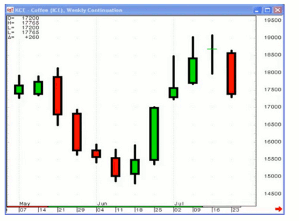In this, the first of a three-part series, the staff at ElliottWave.com explores some of the technical tools this Elliott Wave International senior analyst uses to demonstrate how to identify quality trade setups, not just within the realm of forex, but in any market being traded.
"I always will be an Elliottician, but other technical tools have merit and are indeed worthwhile: they allow me to build a case, build a more confident reason for making a forecast, and for taking a trade; making a trading decision."—Jeffrey Kennedy
I recently asked Trader's Classroom editor Jeffrey Kennedy to name three of his favorite technical tools (besides the Wave Principle). He told me that Japanese candlesticks, RSI, and MACD Indicators are great methods to support Elliott wave trade setups.
In this 3-part series, we will share examples of how to use these 3 tools to build a case in the markets you trade. These practical lessons allow you to preview how Jeffrey applies techniques with proven reliability to support his analysis.
We begin this first lesson with a basic candlestick-style price chart.
This is excerpted from Jeffrey Kennedy's teachings.
You may be familiar with an Open-High-Low-Close (OHLC) chart: comprised of vertical lines with small horizontal lines on each side. The top of each vertical line is the high and the bottom is the low. The small horizontal lines on either side represent the open and close for that period.
Here's an example of a Japanese candlestick chart:
Japanese candlestick charts employ the same data that OHLC price charts do except that the data is expressed differently. The real body is the range between the open and close and appears as a small block. Shadows are the lines that extend upward and downward from this block and represent the highs and lows.
Next, take a look at the chart below.
Two bearish candlestick reversal patterns that Jeffrey finds highly reliable are the Evening Star and the Bearish Engulfing patterns. This weekly continuation chart for the Canadian dollar combines a 20-period moving average to show that the trend is down, allowing you to focus on bearish reversal candlestick patterns to spot trading opportunities.
Jeffrey notes that "combining these reversal patterns with moving averages makes them even more dynamic because they focus your attention in the direction of the larger trend."
Japanese candlesticks begin our spotlight on three of Kennedy's top ancillary tools for trading with the Wave Principle. Over the next two weeks, we'll share parts two and three; how Kennedy uses RSI and MACD Indicators to support his Elliott wave interpretation.
By the Staff of ElliottWave.com




















